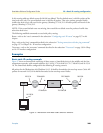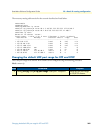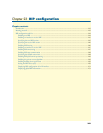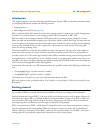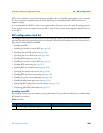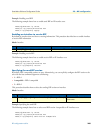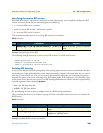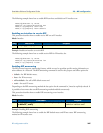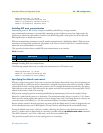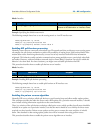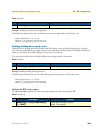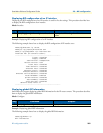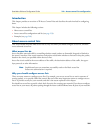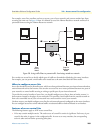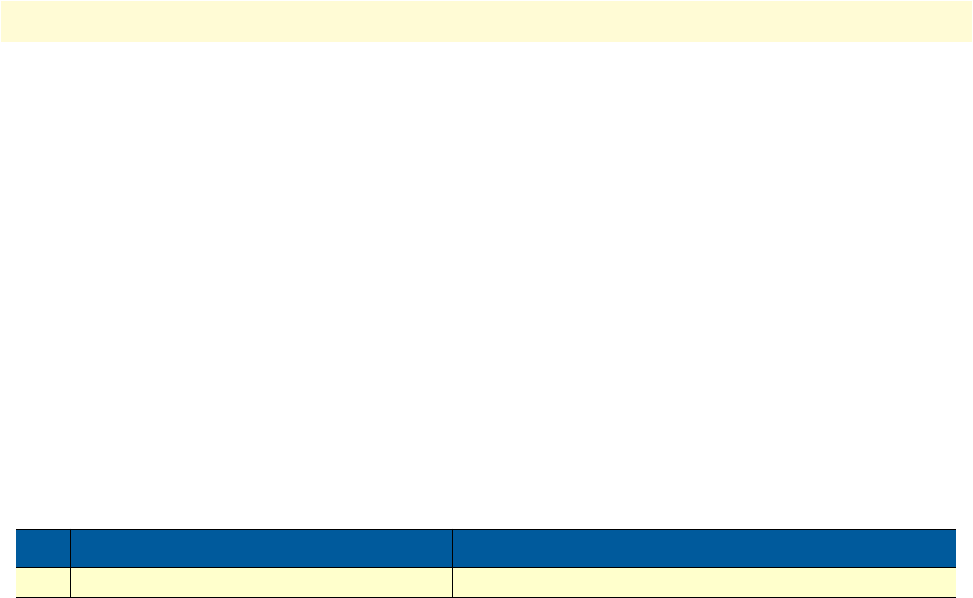
RIP configuration task list 248
SmartWare Software Configuration Guide 23 • RIP configuration
node(cfg)#context ip router
node(ctx-ip)[router]#interface wan
node(if-ip)[wan]#rip announce default
node(if-ip)[wan]#rip announce host
Enabling RIP auto summarization
Summarizing routes in RIP Version 2 improves scalability and efficiency in large networks.
Auto-summarization attempts to automatically summarize groups of adjacent routes into single entries, the
goal being to reduce the total number of entries in the RIP routing table, reducing the size of the table and
allowing the router to handle more routes.
RIP auto-summarization (automatic network number summarization) is disabled by default. With auto-sum-
marization, the SmartNode summarizes sub prefixes to the Class A, Class B, and Class C network boundary
when class network boundaries are crossed.
This procedure describes how to enable RIP auto-summarization on an interface
Mode: Interface
Example: Enabling RIP auto-summarization
The following example shows how to enable auto-summarization on IP interface wan.
node(cfg)#context ip router
node(ctx-ip)[router]#interface wan
node(if-ip)[wan]#rip auto-summary
Specifying the default route metric
RIP uses a single routing metric (hop count) to measure the distance between the source and a destination net-
work. Each hop in a path from source to destination is assigned a hop-count value, which is typically 1. When
a SmartNode receives a routing update that contains a new or changed destination-network entry, the Smart-
Node adds one to the metric value indicated in the update and enters the network in the routing table. The IP
address of the sender is used as the next hop.
RIP prevents routing loops from continuing indefinitely by implementing a limit on the number of hops
allowed in a path from the source to a destination. The maximum number of hops in a path is 15. If a Smart-
Node receives a routing update that contains a new or changed entry, and if increasing the metric value by one
causes the metric to be infinity (i.e. 16), the network destination is considered unreachable.
Because metrics cannot be directly compared, you must specify the default metric in order to designate the cost
of the redistributed route used in RIP updates. All routes that are redistributed will use the default metric.
Setting the default route metric, which is a number, indicating the distance to the destination network ele-
ment, e.g. another router or SmartNode in a network, is possible with the
rip default-route-value command.
The value is between 1 and 15 for a valid route, or 16 for an unreachable route.
This procedure describes how to set the routing metric on an interface
Step Command Purpose
1 node(if-ip)[name]#rip auto-summary Enables RIP auto-summarization on interface name



